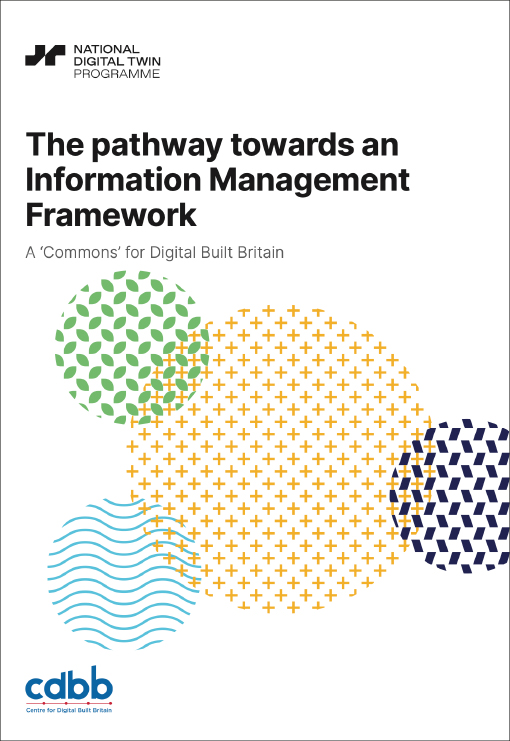The Centre for Digital Built Britain’s National Digital Twin programme has published a report setting out the technical approach for the development of an Information Management Framework (IMF) to enable secure, resilient data sharing across the built environment.
The report, The Pathway Towards an Information Management Framework: A Commons for a Digital Built Britain, is accompanied by a high-level summary, detailing the NDT programme’s approach to leading a cultural shift to reduce the technological, commercial and cultural barriers that prevent effective data sharing.
The summary sets out a vision of creating “a smart nation that will improve lives, strengthen our economy and have a lasting positive effect on the environment that will benefit future generations”.
John Armitt, chair of the National Infrastructure Commission, writing in the summary, says: “Data will undoubtedly have as big an impact on UK infrastructure as the steam engine or steel reinforced concrete. But data can only be truly transformative if we can collect it effectively and, crucially, agree on how we share and use that data to create the best outcomes for everyone.”

Armitt adds: “We all need to be talking the same language. That’s why it’s positive that our roadmap towards a UK digital twin – via greater collaboration, new standards, and strong leadership – is helping create a grammar and a vocabulary of sharing that everyone in the industry can use.”
The way that digital twins are connected is important in ensuring security and the promotion of resilience of assets and systems. The goal is to establish a common language by which digital twins of the built and natural environment can communicate securely and effectively.
Under the NDT programme, the UK’s leading digital innovators from industry and academia are cooperating to develop a language for digital twins to communicate with each other securely and reliably. This has led to the Information Management Framework (IMF) which comprises:
Foundation Data Model (FDM): a consistent, clear ontology for the digital twin ecosystem: a structure for sharing and validating data.
Reference Data Library (RDL): common references, or vocabulary that enable the secure sharing of high-quality data: the common language for describing digital twins.
Integration Architecture (IA): design and build of the digital systems that manage the connected digital twins: the glue that can link twins together.
The IMF will bring together the standards and data exchange protocols that will allow the ecosystem of connected digital twins to be created.













